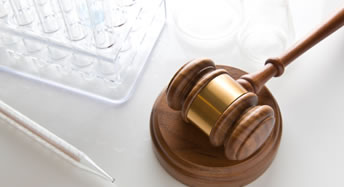SPC protection for second medical use products?
September 2013
Supplementary protection certificate ("SPCs") protect "products". "Products" are defined under Article 1(b) of Council Regulation (EEC) No 1768/92 (“SPC Regulation”) as active ingredients or combinations of active ingredients of a medicinal product. Once an active ingredient has been the subject of a marketing authorization, it cannot be protected by an SPC on the basis of a subsequent marketing authorization for a different formulation of that same active ingredient1. Tying SPC protection to active ingredient in this way also implies that once a marketing authorization has been granted on an active ingredient for one purpose, an SPC cannot be granted on the basis of a later marketing authorization for the same active ingredient used for a different purpose (see Conditions for obtaining an SPC). Indeed, this is what the Court of Justice of the European Union ("CJEU") has held: under Article 1(b), if a basic patent covers a second medical use of an active ingredient, the active ingredient authorised for one use is the same product as the active authorised for another use2. Likewise, an active ingredient authorised for human use is not entitled to an SPC when there is an earlier marketing authorisation for the same active for veterinary use3.
 Hence, the law in this area has seemed reasonably clear. That is, until the CJEU ruling in a case called Neurim Pharmaceuticals (1991) Limited v Comptroller-General of Patents4. Neurim concerns an application for an SPC on the basis of a marketing authorisation and a patent for use of the active ingredient “circadin-melatonin” in the treatment of insomnia in humans, further to Articles 3(b) and (d) of the SPC Regulation. However, the same active ingredient is covered by an earlier marketing authorization for the veterinary product Regulin, used to improve the reproductive activity of sheep. At first instance, in the English Patents Court, it was held that the only decision consistent with the earlier CJEU cases is that the SPC is not permissible. However, on appeal, the English Court of Appeal was concerned that many kinds of valuable pharmaceutical research would not get the encouragement or reward they deserve if such SPCs are not permitted. It therefore referred the matter to the CJEU for a preliminary ruling.
Hence, the law in this area has seemed reasonably clear. That is, until the CJEU ruling in a case called Neurim Pharmaceuticals (1991) Limited v Comptroller-General of Patents4. Neurim concerns an application for an SPC on the basis of a marketing authorisation and a patent for use of the active ingredient “circadin-melatonin” in the treatment of insomnia in humans, further to Articles 3(b) and (d) of the SPC Regulation. However, the same active ingredient is covered by an earlier marketing authorization for the veterinary product Regulin, used to improve the reproductive activity of sheep. At first instance, in the English Patents Court, it was held that the only decision consistent with the earlier CJEU cases is that the SPC is not permissible. However, on appeal, the English Court of Appeal was concerned that many kinds of valuable pharmaceutical research would not get the encouragement or reward they deserve if such SPCs are not permitted. It therefore referred the matter to the CJEU for a preliminary ruling.
The CJEU subsequently ruled that:
…if a patent protects a therapeutic application of a known active ingredient which has already been marketed as a medicinal product, for veterinary or human use, for other therapeutic indications, whether or not protected by an earlier patent, the placement on the market of a new medicinal product commercially exploiting the new therapeutic application of the same active ingredient, as protected by the new patent, may enable its proprietor to obtain an SPC, the scope of which, in any event, could cover, not the active ingredient, but only the new use of that product.
The Neurim ruling therefore appears to have opened up the possibility of obtaining SPC protection for second medical use products even when the active ingredient at issue has already been subject of an earlier marketing authorisation. It does so on the understanding that the SPC Regulation is intended to protect the investment made in pharmaceutical research to discover new therapeutic uses of products. However, this decision is controversial, and the ambit of its application is unclear. This is because the CJEU did not refer in its ruling to any of the authorities referred to above with which it is inconsistent. If followed, the investment based approach the CJEU has taken in Neurim is advantageous for the industry of developing new therapeutic purposes for existing drugs, but it may have come at the expense of a proper reading of the SPC Regulation and previous authorities. The result, as so often with the CJEU, is that more referrals on this issue will now be needed to clear up the law in this area.
If you have any questions on this article or would like to propose a subject to be addressed by Synapse please contact us.


Dr Paul England
Paul is a senior associate and professional support lawyer in the Patents group based in our London office.
"The law in this area has seemed reasonably clear. That is, until the CJEU ruling in a case called Neurim Pharmaceuticals."

